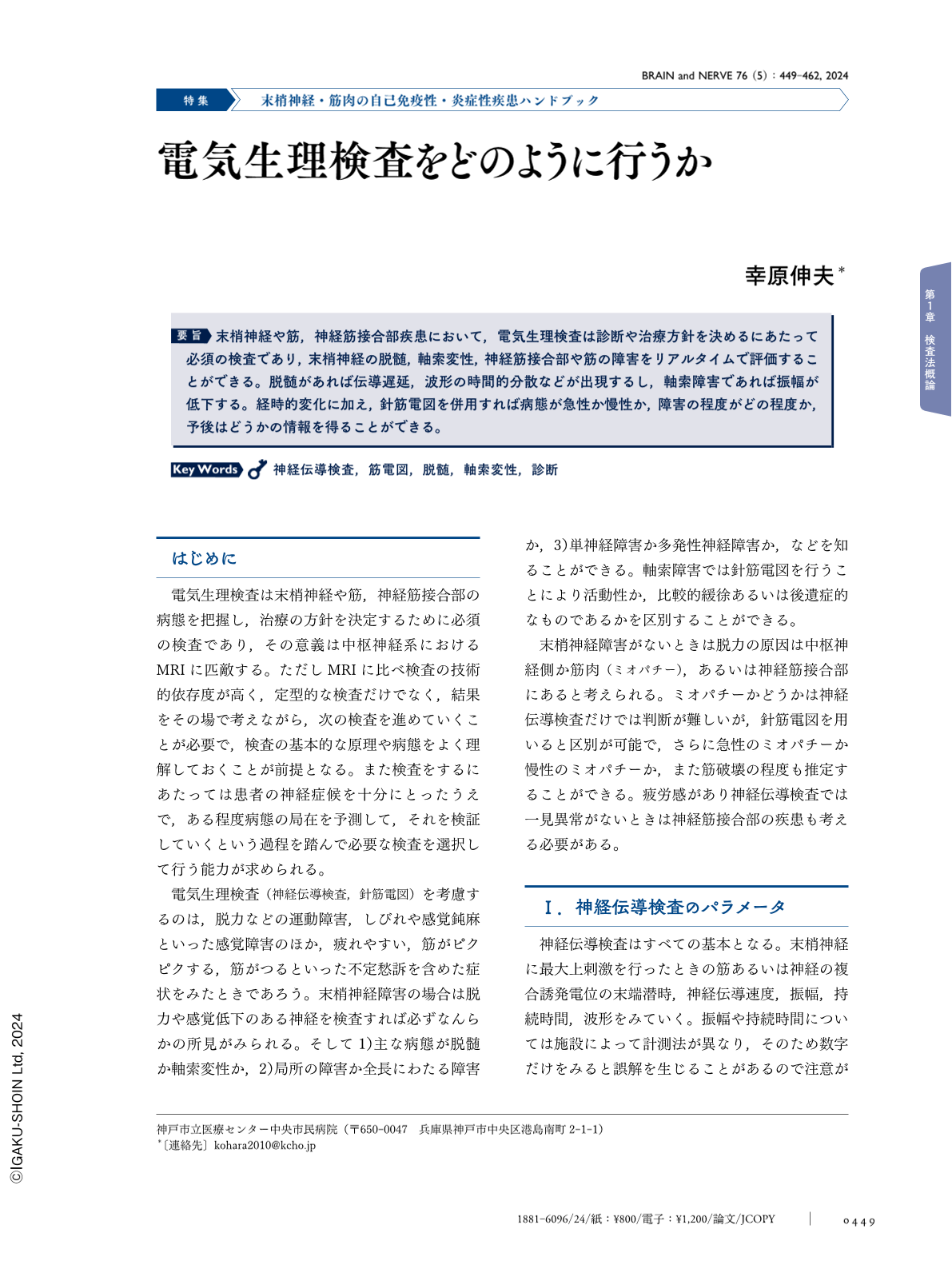Japanese
English
- 有料閲覧
- Abstract 文献概要
- 1ページ目 Look Inside
- 参考文献 Reference
末梢神経や筋,神経筋接合部疾患において,電気生理検査は診断や治療方針を決めるにあたって必須の検査であり,末梢神経の脱髄,軸索変性,神経筋接合部や筋の障害をリアルタイムで評価することができる。脱髄があれば伝導遅延,波形の時間的分散などが出現するし,軸索障害であれば振幅が低下する。経時的変化に加え,針筋電図を併用すれば病態が急性か慢性か,障害の程度がどの程度か,予後はどうかの情報を得ることができる。
Abstract
Electrophysiologic testing plays an important role in evaluating peripheral nerve, muscle, and neuromuscular junction diseases, aiding in diagnosis and treatment strategies by offering real-time assessment. Demyelination of peripheral nerves results in increased conduction delay, temporal dispersion, conduction block, and stimulation threshold. The localization or diffusion of these changes is crucial in understanding disease pathogenesis, necessitating stimulation at multiple points along nerve pathways. When axonal degeneration occurs, the amplitude is reduced, with mild conduction delay. Acute axonal degeneration may require 1 week to develop into Wallerian degeneration. During this time, conductivity was preserved in the nerve peripheral to the lesion. When MG or LEMS is suspected, repetitive nerve stimulation tests and single-fiber EMG are valuable for the diagnosis and pathophysiological evaluation. Notably, the latter is highly sensitive but not specific. Needle electromyography (EMG) assists in differentiating between myopathies and neurogenic diseases, and in determining whether the patient is in an acute or chronic stage. Integration of these tests contribute to an accurate diagnosis when considering the presenting symptoms.

Copyright © 2024, Igaku-Shoin Ltd. All rights reserved.


